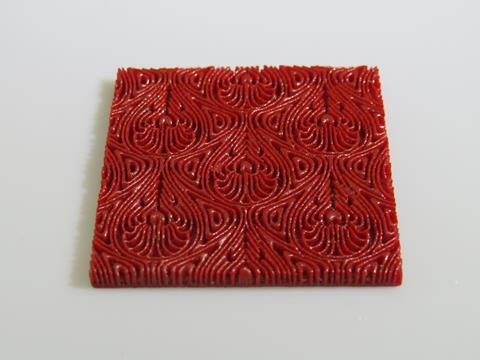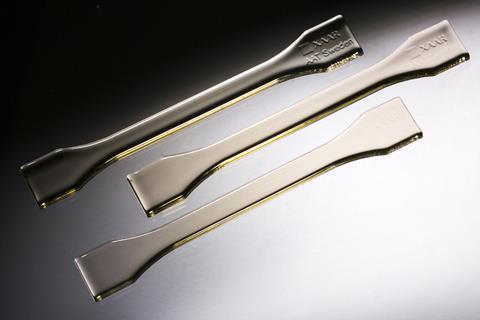+resized.jpg)
3D printing is a manufacturing methodology that encompasses a range of processes and applications, with a common theme of building parts up, usually layer-upon-layer. This additive approach ultimately enables manufacturers to eliminate the need for tooling. Elisabeth Skoda finds out how the possibilities for 3D printing have expanded in the packaging industry in recent years beyond prototyping towards final products from professor Neil Hopkinson, director of 3D printing at Xaar, a leading manufacturer of piezo-based drop-on-demand inkjet technologies
Professor Hopkinson has observed that despite traditionally being used only for prototyping and tooling, 3D printing has already had a big impact on the packaging industry and many other related industries.
However, its biggest impact will be as a means to manufacture final products.
“The biggest challenge in packaging is price at volume. 3D printing is likely to have an important place in the area of highly differentiated products or special events. For example, if England were to miraculously win the football world cup, it would be possible to quickly turn around packaging that relates to that particular event. Other possible applications include special events such as conferences and specialist products.”
3D printing can open up new creative possibilities for packaging.
“3D printing won’t often be able to compete with other technologies for price, but It will enable designers and products to be more creative in their thinking and make packaging far more engaging, exciting and interactive. Short term, the biggest potential in packaging lies with bespoke jigs and fixtures on production lines to interface with new designs. But as mentioned above, 3D has its biggest impact when it makes the product itself.”
Scaling up 3D manufacturing with inkjet technology
Professor Hopkinson is the original inventor of the transformational high speed sintering technology. He has over 20 years’ experience in additive manufacturing technology gained at the University of Sheffield, Loughborough University, De Montfort University, 3D Systems and the University of Nottingham. He is keen to highlight the possibilities of inkjet to make 3D printing more efficient.
“I have a background as a manufacturing engineer, and came into 3D printing wanting to marry the two as much as possible. Historically, the biggest drawback of 3D has been the slowness of the process. Time and time again, inkjet technology was the single platform technology capable of enabling the transition from prototype to volume production.”
Innovative technologies such as laser sintering get a boost thanks to inkjet, Professor Hopkinson explains.
“Inkjet parallelises the conversion of material to part. In laser sintering, you have a powder bed, and the laser draws a shape on the bed layer by layer. A good analogy for the process would be a biro colouring a wall. It is a sequential, slow process. However, if you replace the laser with inkjet technology, which can print droplets on a surface in parallel, it turns it into a parallel process, which is ten to 100 times quicker, driving down costs. This broadens the accessible markets and range of applications.

TF Technology and High Laydown Technology
Xaar has been at the forefront of printhead innovation. The company’s TF Technology is a unique printhead ink recirculationtechnology that allows users to print fluids that are more viscous than the ones other printheads manage, allowing printing of fluids that have higher particle content.
“It enables an increase in viscosity of fluid and particle content and fluid size. This provided a breakthrough in ceramics and is now promising the same in 3D. Higher viscosity means better quality parts in sintering or curing, which is critical when going from prototyping to manufacturing,” Professor Hopkinson points out.
“Higher viscosity means that we can print for example with a higher speed process and print a higher loading of infrared absorber onto a powder bed. This allows us to make stronger and cleaner parts. In the area of 3D Printing by photo polymer jetting we can print materials with more advanced chemistries which gives us stronger, more durable parts.”
An exciting recent development is the High Laydown Technology, a novel way of firing the nozzles during the inkjet printing process.
“It allows a significant increase in throughput and increases viscosity further. It is ideally suited for digitally producing three dimensional effects. The High Laydown Technology prints very high levels of UV inks or high build varnish for tactile effects that enhance shelf appeal for a wide range of packaging and labels, and enables tactile varnish for warning triangles, raised foil and Braille,” Professor Hopkinson explains.
“High Laydown Technology combined with TF Technology provides a powerful differentiator to OEMs wishing to employ Xaar’s inkjet technology. Both technologies are critical for manufacturing.”

Boosting 3D technology development
Xaar’s business strategy in 3D involves two halves – printhead sales and High Speed Sintering.
“We now have a number of staff who are conversant in 3D Printing’s engineering technology and help our customers to get the best out of our printhead technology, allowing us in turn to further develop printhead technology more effectively. As an example, our High Laydown Technology was seamlessly transferred to 3D OEMs in a way that wasn’t previously possible. In the area of High Speed Sintering, Xaar plans to further boost its product portfolio, offering services beyond print heads, developing full 3D printers and developing broader technology,” Professor Hopkinson is happy to report.
In conclusion, Professor Hopkinson is optimistic about the future potential of 3D printing:
“3D printing has historically been an interesting niche technology capable of producing incredible things. The industry is diverse, offering a huge range of technologies, and I can see them converging and ultimately being routinely used as a means of manufacturing end use products, including ground-breaking primary and secondary packaging, at high volumes.”














